1888
The creamery facility, a teaching laboratory from the beginning, is established in the northeast basement of Old Main. It consists of a series of rooms featuring manufacturing equipment for butter and cheese--including cream separators, butter churns, and a cheese vat. Students can apply theories learned in the classroom and use those skills in dairy food manufacturing after graduation.
Students in the women's college learn cheese making at this time.
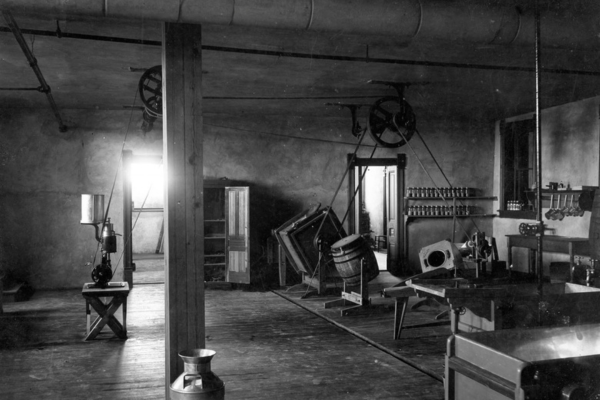
The original creamery in the basement of Old Main during the 1890s.
1893
Professor F. B. Linfield comes to Utah to take charge of dairying. Hundreds of students take his courses during his 10 years at UAC. Several of his students become managers and owners of creameries throughout the state. According to the 1910 Buzzer, "Much of the credit for the present flourishing condition of the dairy industry in Utah is due to Professor Linfield's untiring efforts among the people and his able work at the college."
1907
Dairy manufacturing enters the college curriculum.
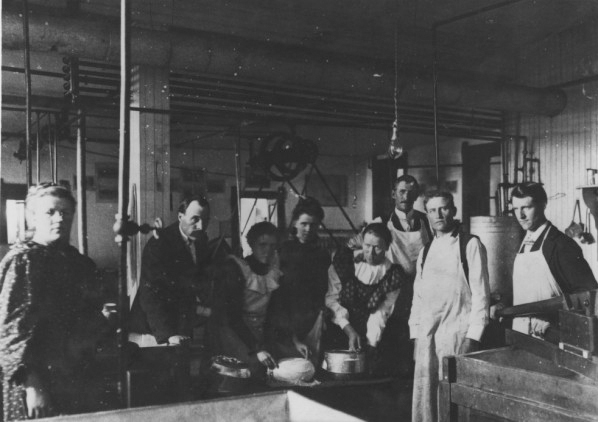
The Creamery in Old Main's basement around 1902.
1910
The Utah Agriculture College (UAC) Creamery begins producing around 100 lbs of butter every weekday. The milk is hauled from the college's herds from nearby farms. According to the 1910 Buzzer, "The dairy is model in its management and equipment, and the products, both butter and cheese, have secured a high reputation and sell at a premium on the Salt Lake and Logan markets."
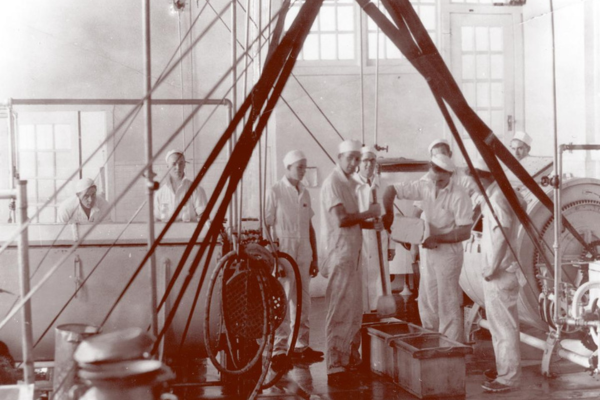
Workers in the Creamery in Old Main.
1918
Faculty and college facilities contribute greatly to war efforts. Buildings are converted for war-time use, the quad becomes a parade ground, and the livestock building on its north side is used to house soldiers. During the 1919 influenza pandemic it becomes a convalescent hospital, and is later restored to house the animal industry departments.
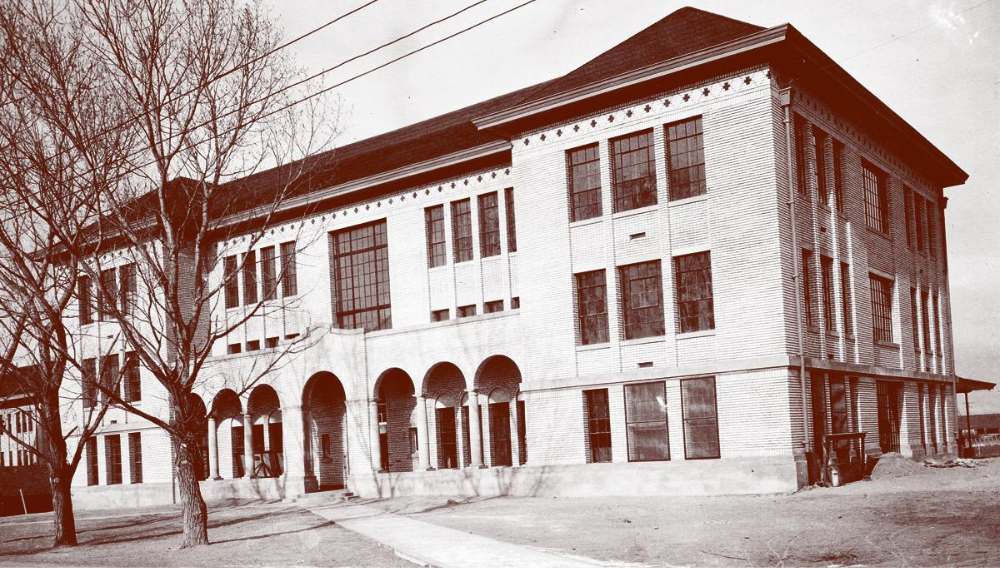
The Animal Industries building, which served to house soldiers and later became a convalescent hospital.
1920
New machinery, including mechanized ice cream freezing equipment, is purchased for the Creamery so it can manufacture cheese, butter, and ice cream on a larger scale. Before acquiring the new machinery, ice cream was made with ice and salt.
During Farm Days on campus, the Creamery provides a place for people to learn the technical aspects of dairy food manufacturing. People from the agriculture industry come for a week to learn technical skills in the Creamery facility during cheesemaking short courses. Cheesemaking short courses are still taught in the facility today.
1921
Future father of Aggie Ice Cream Gustav Wilster joins the Utah State faculty of dairy husbandry in the School of Agriculture and revitalizes the course curricula for the Dairy Department, laying the foundation for Utah ice cream. Wilster has the idea of making Aggie Ice Cream famous by teaching his skills to students and then sending them out into the world. The achievements of his students and their contributions to ice cream manufacturing far exceed his visions of success. His influence leads to the founding of landmark Utah companies including:
- Casper’s Ice Cream
- Farr Better Ice Cream
- Snelgrove Ice Cream
1922
University classes include dairy technology, fluid milk processing, ice cream manufacture, dairy engineering, cheese manufacturing, butter making, inspecting dairy facilities, and dairy product judging. Wilster begins teaching short courses on ice cream making and testing.
An all-you-can-drink supply of buttermilk is available free of charge from a large canteen at the entrance to the Animal Industries Building.
Aggie Ice Cream's storefront opens and features pineapple, raspberry, chocolate, and vanilla ice cream.
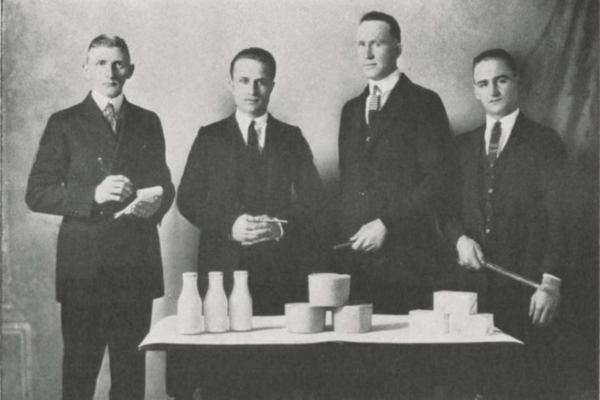
The Utah Agricultural College Dairy Products Judging Team, consisting of Millard Cluff, J. R. Fawcett, Kimball Slaugh, with Gustav Wilster (left) as coach around 1923.
1924
An estimated 2,500 people pitch their tents and make themselves at home for the annual Farmer's Encampment at Utah Agricultural College. Visitors can obtain milk, butter, cheese, and ice cream manufactured at the creamery.
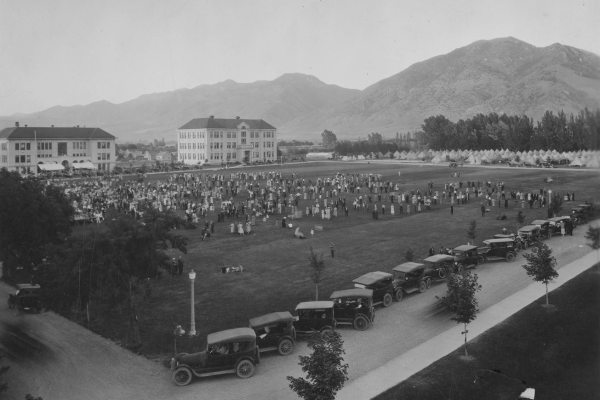
Campus view of Farmer's Encampment east of the Quad in the 1920s.
1932
A.J. Morris, who earned his bachelor’s degree from UAC in 1923 while studying under Prof. Wilster, joins the USU faculty. Morris continues the tradition of reaching out beyond the university by conducting annual ice cream short courses for people in the dairy industry.
Morris was an inspiring teacher and researcher for 31 years at UAC/USAC/USU. He is remembered for teaching his students that milk is nature's most nearly perfect food. Sixty-six of his students ultimately complete advanced degrees and become known worldwide for their research and teaching accomplishments.
His cheese smorgasbords are educational, legendary, and even entertaining—he likes to put deodorant spray next to closed containers of Limburger cheese.
Morris introduces sour cream and yogurt to his students long before they become common fare.
1939
Aggie Ice Cream flavors expand to include strawberry, maple nut, raspberry, apricot, cherry, boysenberry, orange, peach, and cantaloupe.
1946
Paul B. Larsen joins the Dairy Manufacturing faculty. The Aggie Ice Cream store becomes a landmark on the north side of the quad and a part of university life for students and faculty.
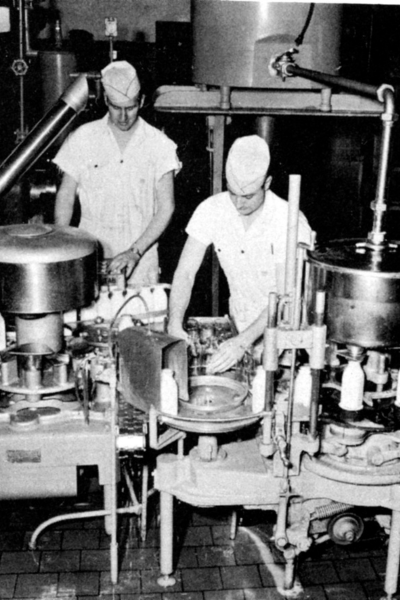
Bottling milk in 1951.
1948
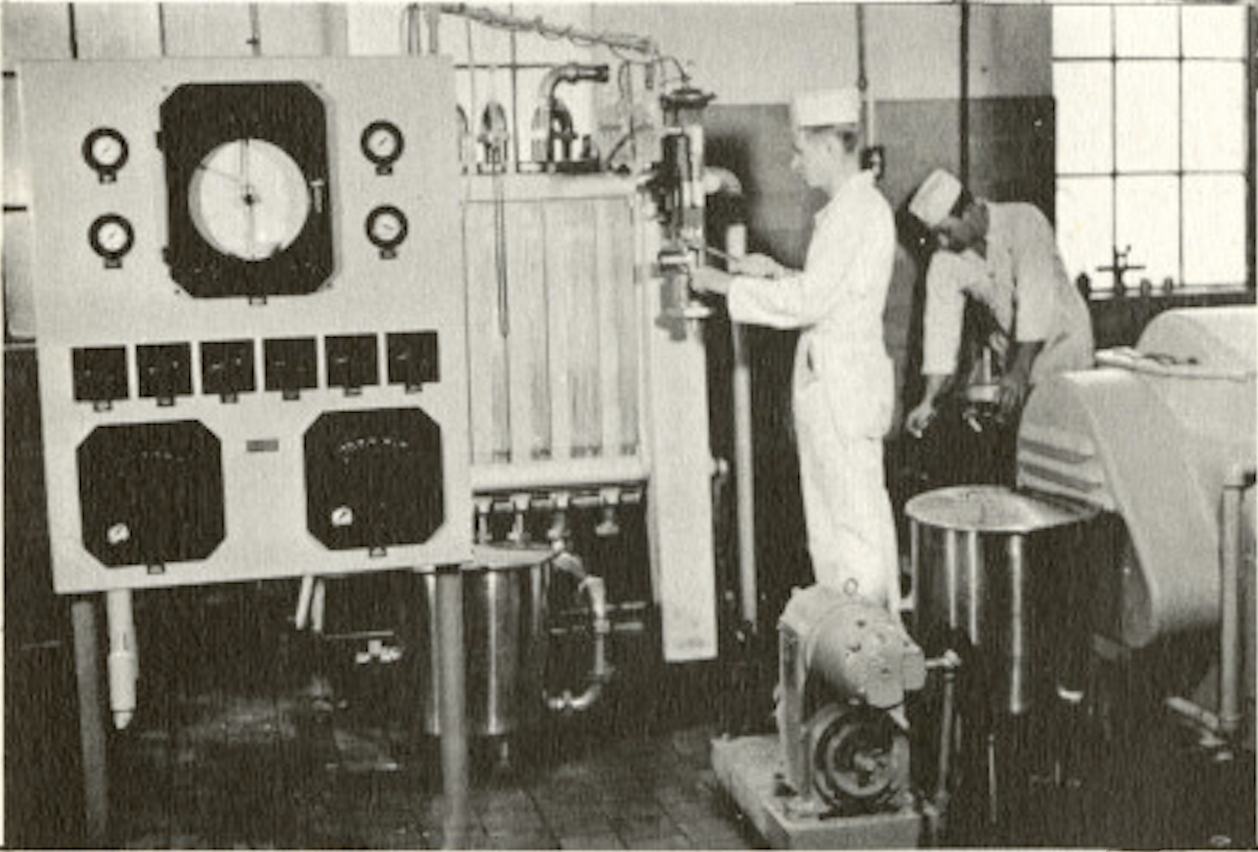
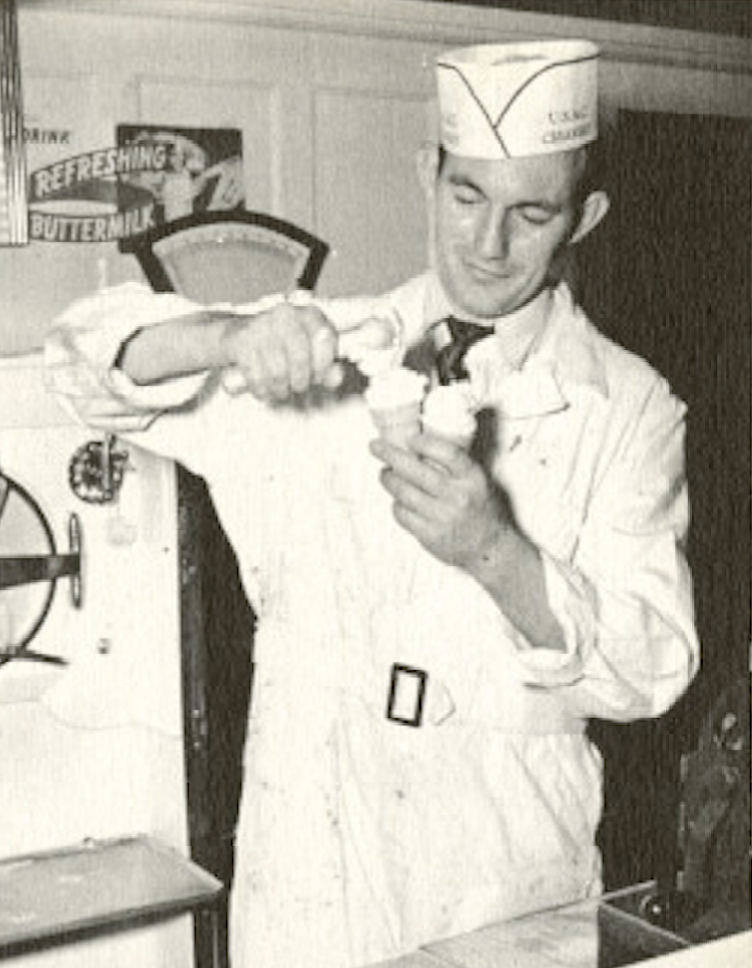
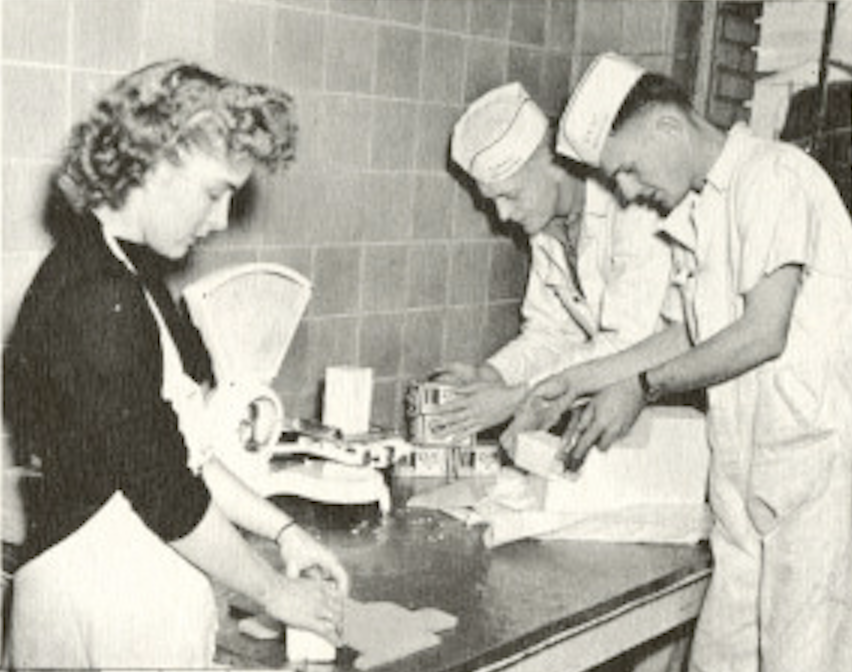
From left to right: 1) Milk from the college cows is flash-pasteurized with this modern dairy equipment to make it safe for students and residents of Cache Valley. 2) A smiling attendant scooping ice cream. 3) Butter is manufactured in the USAC Creamery.
1952
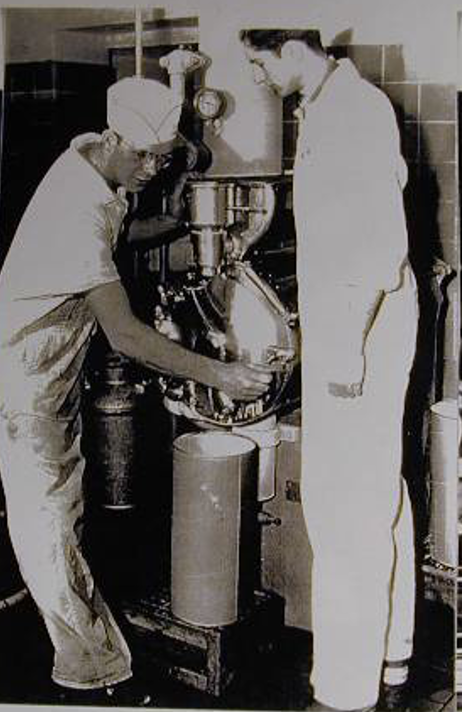
Dairy lab manager Dan Turner and Gary Richardson at the old batch ice cream freezer. Before fruit feeders, this kind of freezer homogenized all fruits and cookies to unrecognizable mush.
1954
Ice cream cones cost 10 cents.
The 1954 Buzzer highlights the Dairy Club and Creamery's importance to student life: "To the Dairy Club and the dairy majors we owe the ice cream, milk and cheese that make up so many Aggie lunches."
To show what they can do with milk and their dairy processing machines, the Dairy Club sponsors a smorgasbord, during which they invite the public to sample all their dairy products.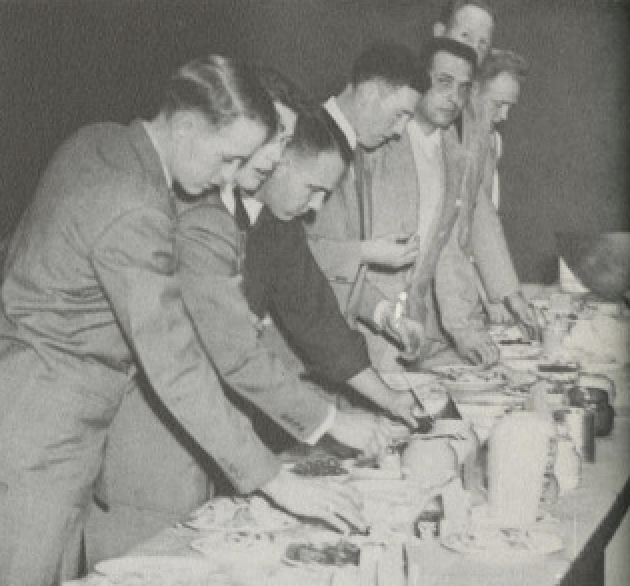
Dairy Club members sample the smorgasbord.
1968
Dairy Manufacturing merges with the Food and Nutrition program in the College of Family Life to form the new Nutrition and Food Sciences Department. With Prof. Tony Ernstrom leading the way, it is time to form a new facility to be constructed to meet the research and teaching needs for the food and nutrition programs.
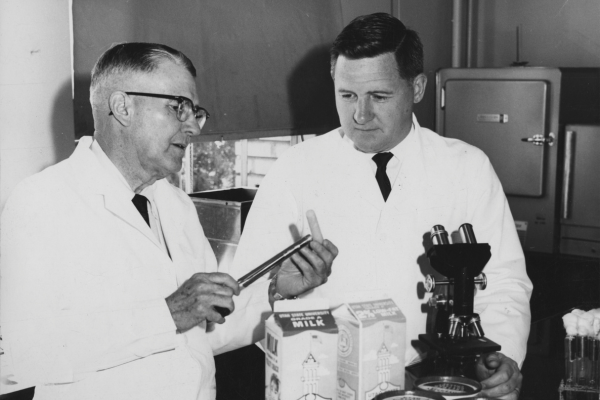
Prof. A.J. Morris sharing his cheese judging skills with Prof. Tony Ernstrom around 1966.
1975
The Nutrition and Food Sciences building is constructed at its current location on the east edge of the university campus, and it includes a dairy processing facility and ice cream parlor. Dairy Manufacturing becomes a part of the Food Science curriculum.
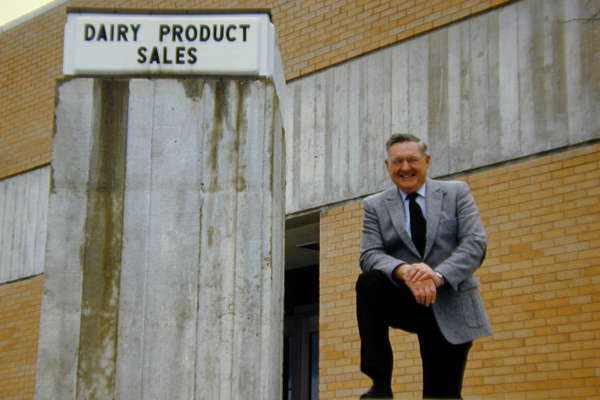
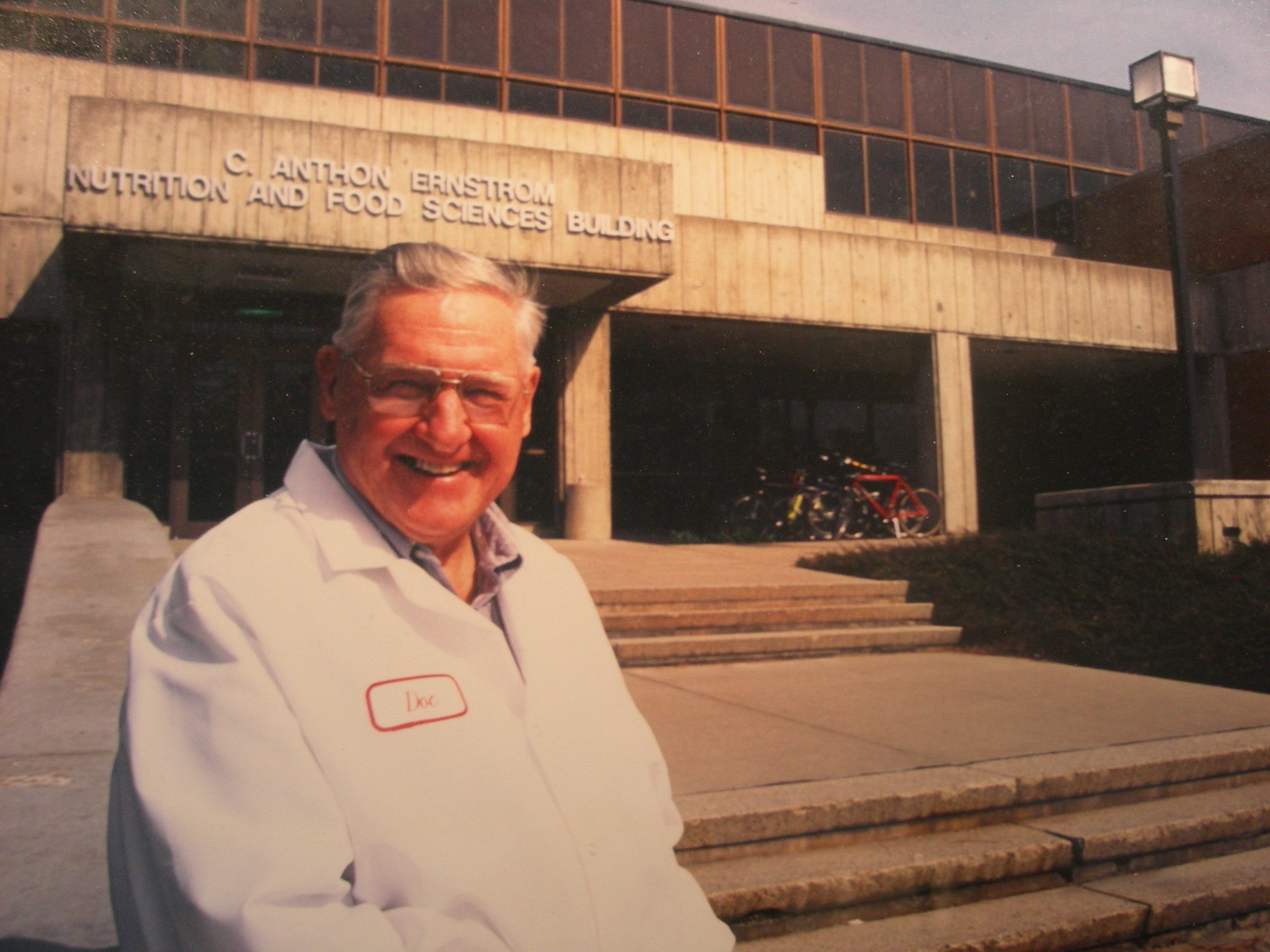
Prof. Tony Ernstrom in front of new NDFS building in the 1970s.
1979
Prof. Rodney Brown joins the faculty and later leads the dairy foods program when Prof. Ernstrom retires in 1987. The Aggie Bull becomes the logo and is prominently displayed on Aggie Ice Cream cartons and the aprons worn by students working their way through college by scooping ice cream.
1992
Donald McMahon becomes the dairy foods professor who teaches dairy processing and technology to the senior food science majors. The Gary H. Richardson Dairy Production Laboratory is the processing lab where the MS and PhD students conduct research on milk, yogurt, ice cream, and cheese.
Running food processing facilities and farms is an expensive venture in order to have up to date equipment for teaching and research activities in our college. Apart from some support for research from the UAES, Aggie Creamery is expected to be self sufficient. This has been achieved through the sales of our ice cream that supports the Aggie Creamery staff, the equipment, and has contributed to needed renovations to the production and sales facilities.
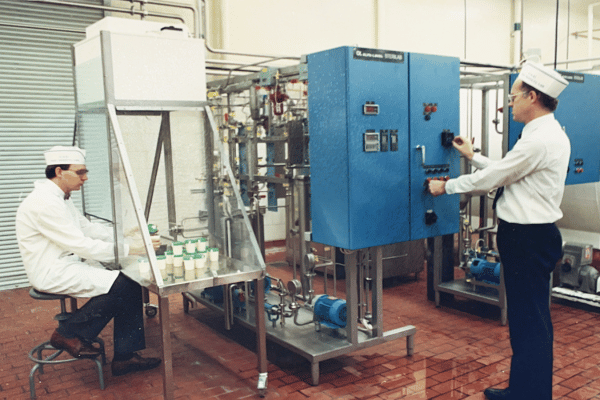 d
d
Don McMahon in the creamery sometime in the 1980s or 1990s.
1998
When the store on the Quad ultimately closed, the ice cream parlor in the food science building becomes the prime location for satisfying cravings for Aggie Ice Cream.
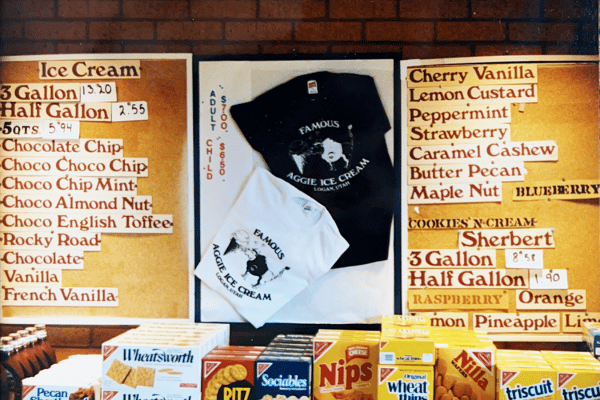
Aggie Ice Cream's flavors in the early 1990s.
2000
There is a renewed interest in cheese making in Utah and surrounding areas. Some successful businesses that learned from USU's dairy processing faculty include Uintah's Beehive Cheese and Heber Valley Cheese.
The cheese vats put in the Creamery are optimized for research and teaching, not production and sales of cheese. If the creamery was just a manufacturing facility, we would have larger vats so more milk could be processed, but these were instead designed as miniature replicas of modern cheese making equipment so students could see modern equipment and so research could be relelvant to today's industry.
2003
Recognized as a premier feature of Utah State University, Aggie Ice Cream receives a place in the university's new marketing program.
2004
Aggie Ice Cream took suggestions for new flavors, then had food science students develop the top ideas. Aggie Blue Mint was born and chosen as the winner, and it received a spot on the permanent menu. The now famous flavor includes chocolate cookie pieces, white chocolate flakes, and blue mint ice cream. Read more about Aggie Blue Mint.
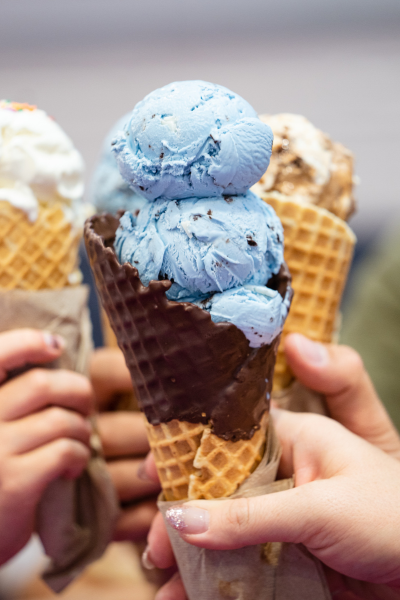
2022
The hundred-year tradition of Aggie Ice Cream made on the Utah State campus by staff and students of the Food Science program continues today. Our newly renovated ice cream parlor is still a place where young and old meet to enjoy a cold, sweet taste of history. Around 50,000 gallons of ice cream are produced yearly.
Gov. Spencer Cox signed an official declaration designating June 21, 2022 as Aggie Ice Cream Day in recognition of 100 years of Aggie Ice Cream.
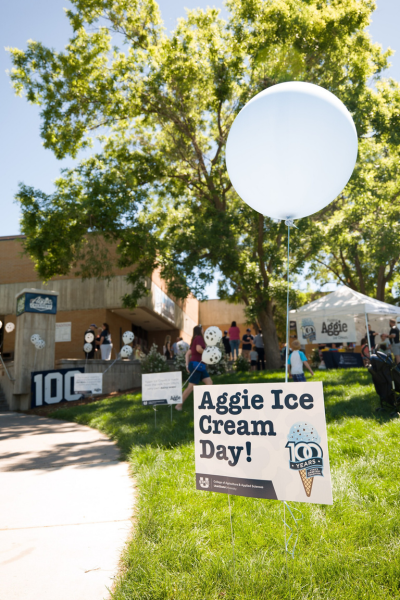
2023
Consumption of Aggie Ice Cream has increased from hundreds of gallons per year to today’s annual production of 52,000 gallons of ice cream and 5,000 pounds of cheese.
In September 2023, Aggie Ice Cream at Blue Square opens.
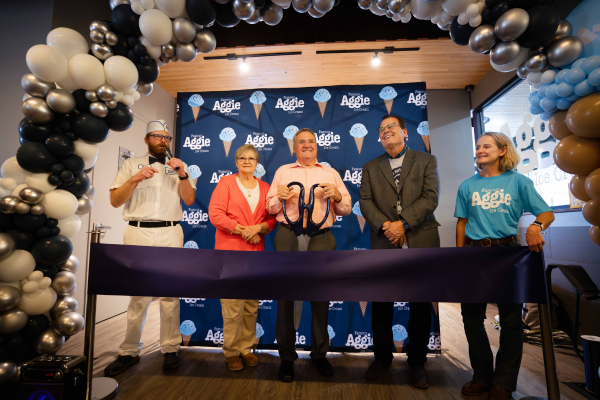
The ribbon cutting at Aggie Ice Cream @ Blue Square in September 2023.

